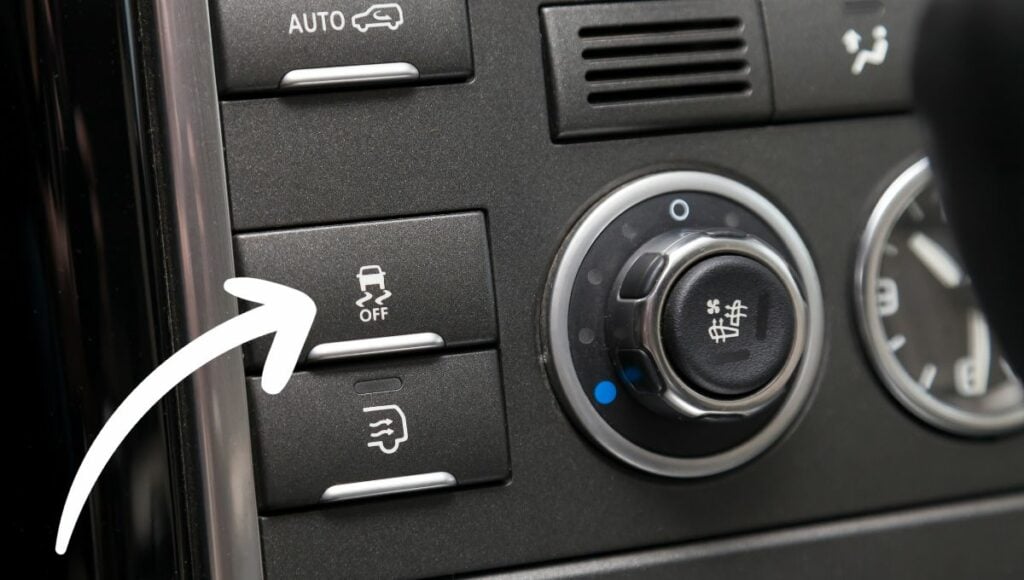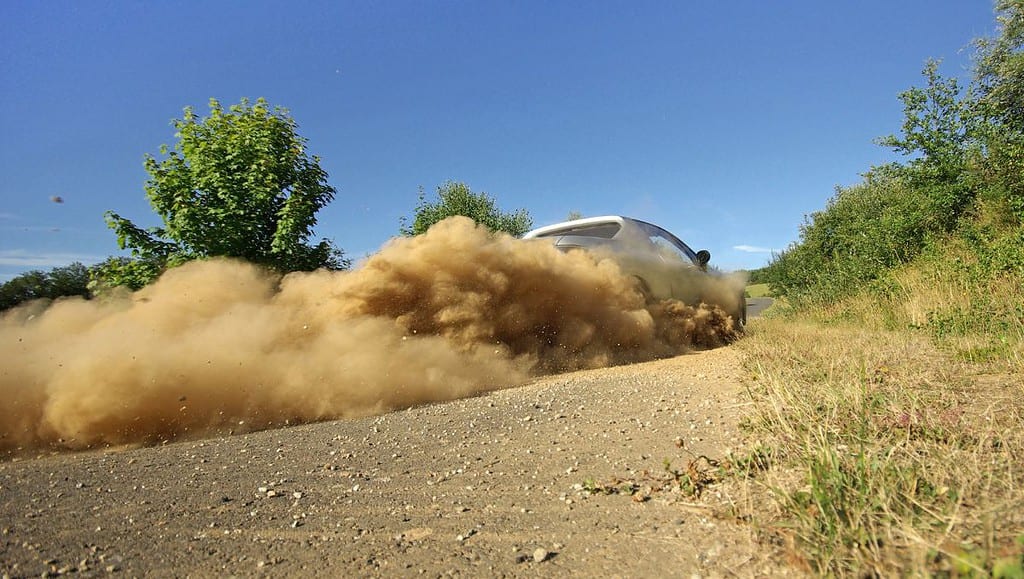Toyota VSC Light: What It Means and How to Fix It (2023)
Toyota VSC light or Vehicle Stability Control, has been a key Toyota feature in its vehicles since the mid-1990s. This VSC system by Toyota has seen constant enhancements over the years. Many Toyota owners don’t know what it is and how to use it.
This article focuses on the Toyota VSC light, what it is, when to use it, when to turn it off, etc. After reading, you’ll understand the meaning of the VSC light and the significance of vehicle stability control.
What is Vehicle Stability Control (VSC)?

VSC works by detecting when the car begins to skid or slide, and then automatically applying the brakes to one or more wheels to help the car regain traction. VSC also reduces engine power to the wheels to help prevent the car from spinning out of control.

Understanding Vehicle Stability Control
Vehicle Stability Control (VSC) is a safety feature installed in many Toyota and Lexus cars. The purpose of VSC is to help drivers maintain control of their vehicles in difficult driving conditions. It is a stability control system that reduces or eliminates the power provided to the wheels, assisting the car in maintaining traction and control.
VSC works by detecting when the car begins to skid or slide, and then automatically applying the brakes to one or more wheels to help the car regain traction. VSC also reduces engine power to the wheels to help prevent the car from spinning out of control.
The Stability Control System is designed to work in conjunction with the Anti-lock Braking System (ABS) and Traction Control System (TCS). The ABS system helps prevent the wheels from locking up during hard braking, while the TCS system helps prevent the wheels from slipping during acceleration.
VSC is an automatic safety feature that operates without any input from the driver. When the VSC system senses that the car is losing traction, it will automatically remove engine power from certain wheels to correct the course of the vehicle and prevent an accident.
In summary, VSC is a safety feature that helps drivers maintain control of their vehicles in difficult driving conditions. It is an automatic system that works in conjunction with the ABS and TCS systems to prevent skidding, sliding, and loss of traction.

The Role of VSC in Different Toyota Models
Toyota has installed the Vehicle Stability Control (VSC) system in many of its models, including the ES, LS, GS, RC, Sienna, UX, Camry, Corolla, RAV4, 4Runner, RX, Avalon, Highlander, Sequoia, and Land Cruiser. The VSC system is designed to stabilize the vehicle if it slips in severe weather conditions or during sudden maneuvers.
The VSC system works by detecting when the vehicle is losing traction and automatically removing engine power from certain wheels to correct the course of the vehicle, preventing accidents.
The system also uses sensors to detect when the vehicle is skidding or sliding, and it automatically applies the brakes to certain wheels to help the driver regain control.
In the Toyota Camry and Corolla, the VSC system is standard on all models. In the RAV4, the system is also standard on all models, and it works in conjunction with the Traction Control (TRAC) system to automatically keep the vehicle moving on the road without slippage.
The VSC system is also standard on the 4Runner, Highlander, and Sequoia, helping to stabilize the vehicle in off-road conditions.

In the Lexus ES, LS, and GS models, the VSC system is standard and works with the Electronic Brakeforce Distribution (EBD) system to help distribute braking force to the wheels that need it most. In the RX, the VSC system is standard and works with the Hill-start Assist Control (HAC) system to help the vehicle maintain its position on steep inclines.
In the Sienna, the VSC system is standard on all models and works with the Brake Assist (BA) system to help the driver apply the brakes in emergency situations.
In the Avalon, the VSC system is standard and works with the Brake Override System (BOS) to help the driver maintain control of the vehicle in emergency situations.
In the Land Cruiser, the standard VSC system works with the Kinetic Dynamic Suspension System (KDSS) to help stabilize the vehicle in off-road conditions.
Overall, the VSC system is an important safety feature in Toyota and Lexus models, helping to prevent accidents and keep drivers and passengers safe on the road.
Interpreting VSC Light Indicators
When driving a Toyota vehicle, it is important to understand the various warning lights that may appear on the dashboard.
One of the most common warning lights is the VSC light. VSC stands for Vehicle Stability Control, which is a system designed to help maintain vehicle stability and prevent skidding during sudden turns or emergency maneuvers.
The VSC light may appear on the dashboard for a variety of reasons. If the light is on, it indicates that there is a problem with the traction control system, and the VSC and ABS systems will be temporarily disabled.
The light may also appear if the driver accidentally pressed the VSC button. In this case, the light will turn off once the system is turned back on.
If the VSC Off and TRAC Off lights are on, it means that the Vehicle Stability Control and Traction Control systems are turned off.
This may happen if the driver manually turns off the systems, or if there is a malfunction in the system. In either case, having the vehicle inspected by a qualified mechanic as soon as possible is important.
If the Check VSC System Warning or Malfunction Indicator Lamp (MIL) light appears on the dashboard, it indicates that there is a problem with the VSC system.
This could be due to a malfunction in the system, a problem with the gas cap, or a problem with the engine. In any case, having the vehicle inspected by a qualified mechanic as soon as possible is important.
It is important to note that the VSC light is not the same as the Check Engine Light or ABS Light. While these lights may appear together, they indicate different problems with the vehicle. The Check Engine Light indicates a problem with the engine, while the ABS Light indicates a problem with the Anti-Lock Braking System.
In summary, the VSC light is an important warning light that should not be ignored. If the light appears on the dashboard, it is important to have the vehicle inspected by a qualified mechanic as soon as possible to diagnose and fix the problem.

Common Causes of VSC Light Activation
The VSC light in a Toyota vehicle can be activated due to a variety of reasons. Some of the most common causes are discussed below.
Loose Gas Cap
One of the most common reasons for the VSC light to come on is a loose gas cap. The gas cap is an important component of the vehicle’s fuel system, and if it is not tightened properly, it can cause the VSC light to illuminate. In such cases, simply tightening the gas cap can resolve the issue.
Malfunctioning Sensors
The VSC system in a Toyota vehicle relies on a number of sensors to function properly. If any of these sensors malfunction, it can cause the VSC light to come on. Some of the sensors that can cause this issue include the wheel speed sensor, camshaft position sensor, ABS sensor, O2 sensor, and crankshaft position sensor.
Brake System Issues
The VSC system in a Toyota vehicle is closely linked to the brake system. If there is an issue with the brake system, it can cause the VSC light to illuminate. Some of the common brake system issues that can cause this problem include a faulty brake pedal switch, wiring issues, and a malfunctioning brake light switch.

Wiring Problems
Wiring issues can also cause the VSC light to come on in a Toyota vehicle. If there is a problem with the wiring that connects the various components of the VSC system, it can cause the system to malfunction and the VSC light to illuminate.
Powertrain Control Module (PCM) Issues
The PCM is an important component of the vehicle’s powertrain system, and if it malfunctions, it can cause the VSC light to come on.
Some of the common PCM issues that can cause this problem include a faulty fuse, wiring problem, or a malfunctioning engine control unit (ECU) or transmission control unit (TCU).
The VSC light in a Toyota vehicle can be activated due to a variety of reasons, including loose gas cap, malfunctioning sensors, brake system issues, wiring problems, and PCM issues.
If the VSC light comes on, it is important to have the vehicle inspected by a qualified mechanic to determine the cause of the issue.
Resetting and Turning Off the VSC Light
If the VSC light is on, it is important to address the issue as soon as possible. While the VSC system is designed to help improve vehicle stability, having the light on can indicate a problem with the system. Here are some steps to reset or turn off the VSC light:
Check VSC System Light
If the Check VSC System Light is on, it is recommended to have the vehicle inspected by a qualified mechanic. This light can indicate a more serious issue with the VSC system and should not be ignored.
VSC Button
Some Toyota and Lexus models have a VSC button that allows the driver to turn off the VSC system. This button is typically located on the dashboard or center console. However, it is important to note that turning off the VSC system can increase the risk of losing control of the vehicle in certain driving conditions.
Turn Off
If the VSC light is on but there are no other warning lights, the driver can try turning off the vehicle and restarting it.
This can sometimes reset the system and turn off the VSC light. However, if the light comes back on, it is important to have the system inspected by a qualified mechanic.
Reset
To reset the VSC system, the driver can try disconnecting the battery for a few minutes and then reconnecting it.
This can sometimes reset the system and turn off the VSC light. However, it is important to note that disconnecting the battery can also reset other systems in the vehicle, such as the radio presets and clock.
It is important to address any issues with the VSC system as soon as possible to ensure the safety of the vehicle and its occupants.
If the VSC light is on, it is recommended to have the system inspected by a qualified mechanic to determine the cause of the issue and make any necessary repairs.
The Impact of Weather Conditions on VSC
The Vehicle Stability Control (VSC) system is a crucial component of Toyota vehicles, especially in difficult weather conditions. VSC helps to improve vehicle stability and prevent skidding or loss of control in dangerous driving situations. It is a feature that Toyota and Lexus offer in their vehicles.
In rainy and wet conditions, VSC helps to keep the car in control. Rain can make roads slippery and difficult to navigate, especially when driving at high speeds.
The VSC system detects when the car is losing traction and takes action to prevent accidents. The system applies the brakes to individual wheels to help the car maintain traction and prevent skidding.
Mud is another difficult condition that can impact the VSC system. Mud can clog the wheels and reduce traction, making it difficult to control the car. In such conditions, VSC helps to keep the car in control by applying the brakes to individual wheels and preventing skidding.
In snowy conditions, VSC is essential to keep the car in control. Snow can make roads slippery and difficult to navigate.
The VSC system detects when the car is losing traction and takes action to prevent accidents. The system applies the brakes to individual wheels to help the car maintain traction and prevent skidding.

In heavy rain, mud, or snow, VSC is even more important. These conditions can make it difficult to control the car, and VSC helps to keep the car in control by applying the brakes to individual wheels and preventing skidding.
In difficult conditions, VSC is a crucial safety feature that can help prevent accidents. Toyota and Lexus vehicles are designed to provide maximum safety and stability in all weather conditions, and the VSC system is an essential component of that design.
Professional Diagnosis and Fixes
When the VSC light comes on in a Toyota vehicle, it is important to take it seriously and get it checked out by a professional. A mechanic who is knowledgeable about Toyota vehicles can perform an engine power diagnostic test to determine the cause of the problem.
The diagnostic test will check the engine power and electrical system to see if there are any issues. If there are no issues with the engine power or electrical system, the mechanic will then check for error codes. Error codes can provide valuable information about what is causing the VSC light to come on.
Once the mechanic has determined the cause of the problem, they can then recommend the appropriate fix. Depending on the cause of the problem, the fix may involve replacing a faulty sensor, repairing a damaged wire, or replacing a damaged component.
It is important to note that attempting to diagnose and fix the problem yourself can be dangerous and can cause further damage to your vehicle. It is best to leave the diagnosis and repair to a professional who has the knowledge and experience to do the job safely and effectively.
In summary, when the VSC light comes on in a Toyota vehicle, it is important to take it seriously and get it checked out by a professional. The mechanic will perform an engine power diagnostic test, check for error codes, and recommend the appropriate fix. It is best to leave the diagnosis and repair to a professional to avoid causing further damage to the vehicle.
